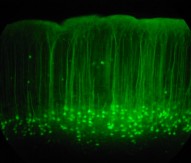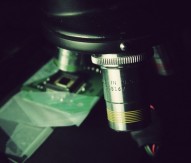
Quantum physics problem ‘unsolvable’
A mathematical problem underlying fundamental questions in particle and quantum physics is provably unsolvable, according to scientists.
The researchers at University College London, the Complutense University of Madrid and the Technical University of Munich said that it is the first major problem in physics for which such a fundamental limitation could be proven. The findings, part-funded by the European Research Council, are seen as important because they show that even a perfect and complete description of the microscopic properties of a material is not enough to predict its macroscopic behaviour.
A small spectral gap – the energy needed to transfer an electron from a low-energy state to an excited state – is the central property of semiconductors. In a similar way, the spectral gap plays an important role for many other materials. When this energy becomes very small, i.e. the spectral gap closes, it becomes possible for the material to transition to a completely different state. An example of this is when a material becomes superconducting.
Mathematically extrapolating from a microscopic description of a material to the bulk solid is considered one of the key tools in the search for materials exhibiting superconductivity at ambient temperatures or other desirable properties. The study shows crucial limits to this approach: using sophisticated mathematics, the authors proved that, even with a complete microscopic description of a quantum material, determining whether it has a spectral gap is, in fact, an undecidable question.
Co-author Dr Toby Cubitt from UCL Computer Science said: “What we’ve shown is that the spectral gap is one of these undecidable problems. This means a general method to determine whether matter described by quantum mechanics has a spectral gap, or not, cannot exist. Which limits the extent to which we can predict the behaviour of quantum materials, and potentially even fundamental particle physics.”
The study is published in Nature.




